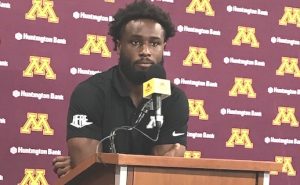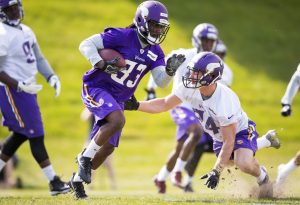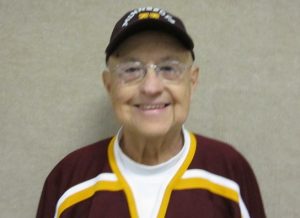Let’s get right to the grades after the Vikings’ last minute 28-24 win over the Lions today at US Bank Stadium.
The Vikings, now 2-1, trailed 24-14 going into the fourth quarter. In its previous games Minnesota hadn’t produced a touchdown in the second half. But when today’s game was over the Vikings had scored two fourth quarter touchdowns, including a 28-yard strike from quarterback Kirk Cousins to wide receiver K.J. Osborn in the last minute.
Minnesota had never led in the game until the Osborn touchdown with 25 seconds remaining. Give the Vikings an A team grade for persistence.
Lions’ coach Dan Campbell gets an F for late-game strategy. It was his fourth down decision to go for a failed field goal of 54 yards that allowed the Vikings, trailing 24-21, to start their winning TD drive from their own 44-yard line. A Detroit punt sending the Vikings back near their own goal would have been a savvy option and no-brainer for most coaches.
Cousins and his offensive line deserve B- grades. A popular target for not delivering in pressure situations, Cousins threw for 260 yards and two touchdowns today. The Lions were blitz crazy but his offensive line and own awareness helped him avoid interceptions and he was sacked just once.
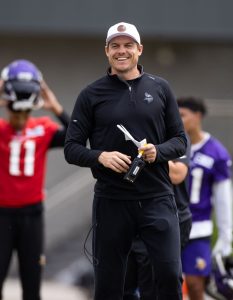
The offense didn’t have much of a day for explosive plays but got two big ones at the end when Osborn preceded his winning reception with another 28-yarder. Running back Dalvin Cook had his best game of the season with 96 yards on 17 carries before apparently injuring his shoulder. Minnesota coach Kevin O’Connell said on the KFAN Radio postgame show he didn’t think the injury was serious.
The Vikings’ defense stopped the now 1-2 Lions in the closing seconds, ending the game with a Josh Metellus interception of a Jared Goff pass. Hard to give that unit better than a below average grade for its work today, though. The Lions consistently opened running holes and Goff’s repetitive completions over the middle were an embarrassment. The Vikings didn’t come up with a single sack and Detroit’s time of possession was 34:04, while Minnesota’s was 25:56.
The last four games in the series between the two NFC North Division rivals have been decided by four points or less. When the Vikings and Lions play again, December 11 in Detroit, the days will be counting down to Christmas. The Vikings better plan on playing better because they can’t expect another “gift” from Campbell.
Worth Noting
It’s believed the University of St. Thomas will soon announce plans to build an on-campus hockey facility after considering other sites in St. Paul. To meet CCHA guidelines the facility will have to seat at least 3,000 fans.
The Gopher football team, dominant in a 34-7 win over Michigan State Saturday, has outscored opponents 183-24 in four games. Minnesota has punted three times all season.
Minnesota is No. 21 in the Associated Press top 25 poll out today. It’s the first time this season the Gophers have been in the AP top 25. Haven’t been ranked by the AP since 2020.
U marketers are promoting the first ever Stripe Out in Huntington Bank Stadium next Saturday for the Purdue game. Fans in various sections are asked to wear maroon or gold clothing.
Former Gophers head coach Jerry Kill earned his first win at New Mexico State last night with a 45-26 home victory over Hawaii.
Often injured Byron Buxton hasn’t played in a Twins game since August 22 and will finish the year appearing in 92 games. That ties the 92 games he played in 2016 for the second highest total of his eight-year career. In 2017 the Twins’ MVP played in 140 games.
The best hope the Twins may have in retaining Carlos Correa for next season is if he and representative Scott Boras decide the less crowded free agent market for shortstops a year from now is their best strategy for a mega contract deal.
Without splashy offseason moves, including possible retention of Correa, the Twins will find it difficult to retain and grow their disappointed fanbase.
It was 10 years ago this fall that St. Paul native Tim Tschida, now 62, retired from umpiring MLB games. The affable Tschida enjoys tending bar at Mancini’s Char House.
Long before home run king Aaron Judge and hockey immortal Wayne Gretzky wore No. 99, Minneapolis Lakers great George Mikan popularized the number. He was voted Mr. Basketball of the first half of the 20th century by Associated Press.
BTW, although way overdue, the Los Angeles Lakers will retire Mikan’s number in a home game October 30 against the Nuggets.
Oddsmakers have the Timberwolves, who have their first training camp practice Tuesday, finishing second in the Northwest Division behind the Nuggets.
Gophers basketball player Parker Fox has a podcast called “Double Down.” https://www.youtube.com/watch?v=0X25lkiCNXM
For the first time ever Minneapolis will host Big Ten Basketball Media Days. The event October 11 and 12 at Target Center will include coaches and players from all 28 men’s and women’s basketball programs. Minnesota coaches Ben Johnson and Lindsay Whalen will speak October 12.
Nolan Winter, the Lakeville North basketball recruit who has verbally committed to Wisconsin, will be a nice fit in the Badgers’ offense that features outside shooting by its bigs, but his decision to turn down the Gophers is painful for local fans who over the years have watched a “parade” of Minnesota preps travel to Madison.
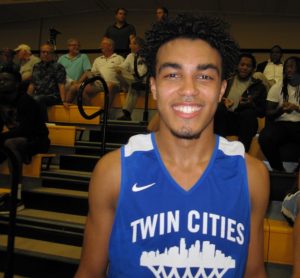
Apple Valley’s Tre Jones, a reliable playmaker but able to make just 19.6 percent of his three-point attempts last season, could emerge in training camp as the starting point guard for the NBA Spurs. Jones, 22, is starting his third NBA season.
The USHL Fall Classic in suburban Pittsburgh this weekend is attracting about 300 scouts and college coaches including former Wild GM Chuck Fletcher now in the same role with the Flyers. All 16 USHL teams are playing their first games of the season.
Budding superstar Kirill Kaprizov, who probably would be targeted for military conscription if still in his native Russia, played with teammates and others in the Wild’s inaugural golf tournament last Monday at Royal Golf Club in Lake Elmo. The course opened in 2018 but is up for sale with a possible purchase price of $8 million, per a September 20 story from Minneapolis/St. Paul Business Journal.
Bally Sports North will televise three Wild preseason games: October 2 and 6 against the Blackhawks, and October 8 with the Stars.
Oddsmakers have the Wild, who started preseason practices last Thursday, finishing second to the Avalanche in the Central Division.
Some Wild preseason practices at TRIA Rink are open to fans who must pre-register. http://www.wild.com/openpractices
St. Thomas football coach Glenn Caruso speaks to the CORES group November 10 at the Bloomington Event Center. Former North and Henry basketball coach Larry McKenzie will be the January 12 speaker. More information about CORES is available by contacting Jim Dotseth, dotsethj@comcast.net. CORES is an acronym for coaches, officials, reporters, educators and sports fans.
Comments Welcome




